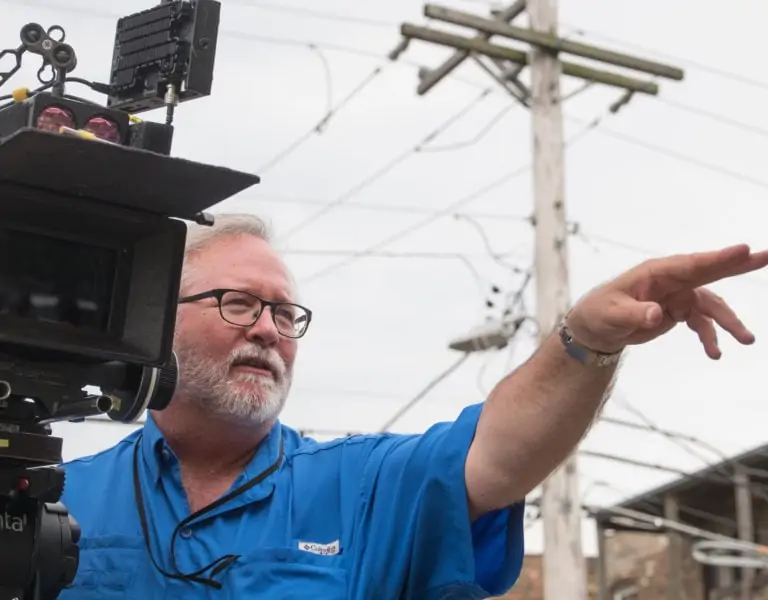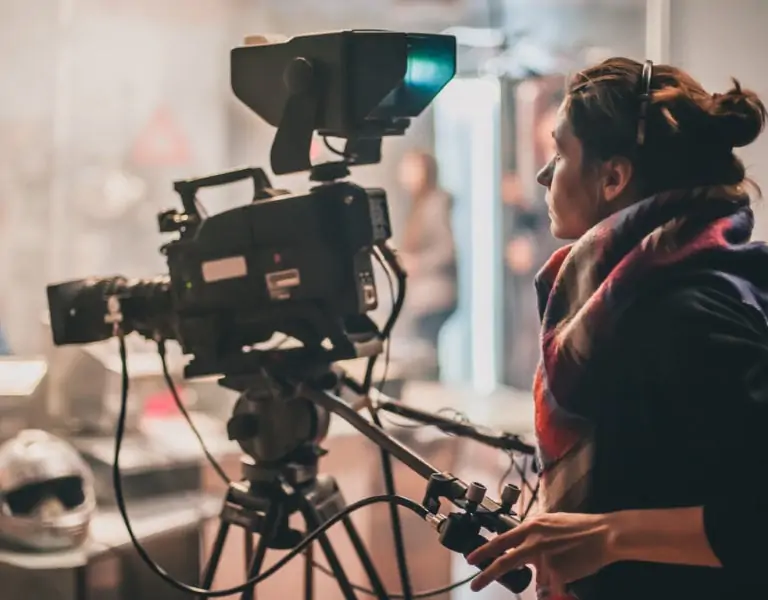By investing in the future of the business now, you will get more back in the long run, with the investment going back into development and new kit to use.
The lengths some productions will apparently go to save a few quid from a huge production budget by misusing their prep and wrap provisions – highlighted in Tim’s piece above – are shameful. A few recent chance comments I had with varied work colleagues ignited some longer conversations. They starkly contrasted with my previous perception and ultimately called into focus a much wider, greater reconsideration of many areas of the business. I want to share with you the bigger conclusions coming from these discussions so you can see if they are true for you.
These discussions included the current state of the moving picture making business and where it may be going in the future, and is professionalism being downgraded and apparently less important? What will happen to professional crews? Many elements come into play for camera crews in particular, including less possibility of foreign travel, working in close groups and studios, and much more.
On one level the camera departments have always had a structured progression from the camera hire companies leading to potential work on satisfying productions a few years down the line. This is a great investment for the camera hire companies, as the more knowledge the users have of the gear, the more likely it will be used properly and not broken when on set. It will also come back to the rental houses in a better state, as the crew will know how to send it all back as clean and complete as possible. In other words, they will want to send it back as they would like to receive it and have an empathy with the current camera hire technicians. Sending it back with mud on the cables and some parts of the kit in the wrong boxes is a pain for the people who need to clean it and prep it for the next job.
The GBCT also has a world-class scheme for trainees to be included in a camera department on major moving pictures. This occurs every two years and is open to the most dedicated and keen young people who have a passion for the business and their career progression. There are also schemes to achieve formal qualifications in the areas of cameras, and the grips department also has schemes for training on the job and at college to achieve Grip level 2 and level 3 Diplomas in professional competence. This is a vital safety course, as using camera cranes and other heavy equipment can be extremely dangerous in the wrong hands. The same progression and training can be seen in many other departments, such as lighting, carpenters, sound, script supervisors and many other areas of film production.
For someone to be working on a movie set means they have normally earned the right to be there, as they have worked hard in the past to learn their craft and dedicate themselves to learning new techniques and technologies, often at their own expense. This business has never been moving quite so fast in terms of technology and finding different ways to do things, and each one of us needs to make an effort to keep up with new trends, or we can be left behind. This also applies to equipment hire companies, as the pace of development of new gear has been exponential.
This comes with a caveat, however. The current budgets and shooting schedules are often set many months (or years) before any photography takes place, as studios and locations need to be scouted and shooting dates set. Then actors are chosen, and a director is attached to work out exactly how the finished film will flow. Then a DP comes on board, and they will always have their particular style of lighting that dictates the lighting list, set design and much more. Now this is a very simplified and condensed version of the pre-production schedule, yet it demonstrates my next point. The budget is set at this point, and many people are on the payroll each day, with the number growing daily. The set build budget has a limited ceiling budget, as does camera hire, lighting, grip gear, etc. Each department has a limit to how much they can spend to make their part of the movie jigsaw puzzle come together within budget. It could be £2 million, or it could be £200,000. Whatever it is, there is a limit.
The question comes to each head of department when building a set or building a lighting list. “What is the budget, and what can I spend?”. If you are on a larger production, the budget is perhaps even tighter, as each department wants the very best for their particular skill set and areas of expertise. However, there will be a budget limit on every production, no matter how large or small it may be.
Often materials such as wood and paint may be subject to a discount when ordered in large enough quantities, and that can go for many services and materials when purchased in bulk. Yet cameras and lighting gear (and other equipment) now has a shorter working life span, and it needs to recoup their purchase and maintenance costs within a shorter time. Their useful life is so reduced compared to a decade or so ago due to technology advancing at such a pace. A new “must have” camera with higher resolution/ features is introduced and makes a predecessor redundant virtually overnight in some cases. The technology advances in lighting in particular have been meteoric, leaving some previously excellent fixtures redundant and unused.
A daily hire rate was worked out with a simple equation that was 1% of the purchase price. Easy. So, a £50,000 piece of equipment went out at £500 a day. It makes its investment back within 100 days of hire, or 20 weeks of 5-day weeks. Roughly six months, in other words. Everything beyond that is gravy for the hire company. This is then into a profit the hire company can use to re-invest in more gear to service their clients. Clearly discounts can be applied for longer stretches of business, and there are costs associated in maintaining the gear, yet this was the rough figure most could understand and budget for.
So why is it that many productions will ask for a huge list of materials to build the set, or a lighting list as long as your arm that takes them way over budget? To compare to another hire business, if we went to hire a luxury car, for example, and it cost say £100 a day. It could be £450 for a five-day week, but that’s the rough idea. Who would go into the car hire office and say “I want the Mercedes C-Class for a week, and I know your price is £450 per week, but I don’t have the budget. I only have £200”. I know pretty much what the hire company would say… No. Then, further to that you say, “I don’t have the money now, I will pay you in six months’ time, if I have any money left. Also, I don’t want to pay for any accident insurance, but if I have an accident I won’t pay for any losses. Can I drive the car away now? I am in a hurry, I need to catch a plane.”? Err, no.
This is however how some production companies work. Their budget is way under evaluated, and is mostly based on guesses, as the budget is set before many factors are fully known.
This gets compounded when the business gets extremely busy, and the very best people are all snapped up and the people who are left available are inexperienced or some who are quite frankly, not very good. Imagine a scenario where a trainee in production needs to book crews, work on a budget with multiple stages and locations, without all the available information. For example, a period drama requiring night shoots of a castle or stately home, for example, is a formidable undertaking, and the DP and gaffer need to be heavily involved at an early stage. A proper recce needs to be done and the power generating requirements, cable and distribution need to be evaluated and an accurate lighting list needs to be drawn up, then the costs evaluated and submitted to the producer. Only then can the budget realistically be drawn up. If the script says something like “The armies storm the castle at night, with burning oil and torches carried up the hill…” you will know that is not going to be a cheap scene! Without knowing a lot about it, most people can work out that scene could be shot over several nights and cost many tens of thousands in terms of the lighting list alone!
Let’s just say its £250,000 for that scene to be shot, with camera crew, grips, and equipment genny operators, electricians, etc. If the production has budgeted for £50,000 then the budget is wrong! They will get a £50,000 scene instead of a £250,000 scene. It’s no use saying, “Can we have the people and gear for a fifth of the price please?” A budget is a budget, and it determines whether a movie is viable and will hopefully make a return on the investment, or if it makes a loss.
I know a very fine documentary producer who will carefully budget and script a film series and would deliver the budget estimate to the backers. Often, they would say we need to reduce the £100,000 budget to £90,000. He would reply, “Well, it’s a £100,000 budget for that film as it is”. When he gets pressed to reduce the budget, he takes the script and literally rips out several key scenes from the script, screws them into a ball and throws them into the wastepaper basket! He then gives it back to them. When they protest, he says that’s a £90,000 script now, but it won’t be the same film, and it won’t tell the full story you wanted to. Funnily enough, he always got the budget he needed to shoot his scripts as he wanted!
On another level, the grading of a moving picture is now extremely crucial for a DP to attend, as the post-production and grading have so many potential pitfalls to stumble into. Yet often the DP is not paid to be there, as it is deemed to not be part of the actual shooting of the film! Surely there is a budget for a DP to create the look they carefully created on location, and why is that not built into the budget?
The upshot of all this is most people who physically turn up on location to make the movie are highly skilled and motivated and love their craft. They are perceived to be paid quite well compared to some other businesses, yet I often hear the daily rates for some camera crews have stuck at rates from 20 years ago.
Then there are those who hold the purse strings and control the budgets. They seem to be generally less experienced and therefore make more (potentially huge) mistakes with budgets and logistics. The only ones who seem to lose out are the camera and equipment companies forced into doing a very low money deal, leaving less to reinvest for the future growth. There are also the camera crews, (and I include grips, script supervisors, electricians, trainees, carpenters, craftspeople, editors, sound recordists, etc. who make up a full team). A movie with a budget of $100,000,000 is not going primarily to the crew who put the film on the screen. When there is a huge budget there is more scope to go over budget, or under-estimate the costs.
Invest in the future of the business now and you will get more back in the long run, with the investment going back into development and new kit to use. If no investment is made back into companies, then it is possible you will have fewer choices in the future, as some will have been made unprofitable. Assuming we all want a thriving and exciting film future, think about that when you budget your next film.

















